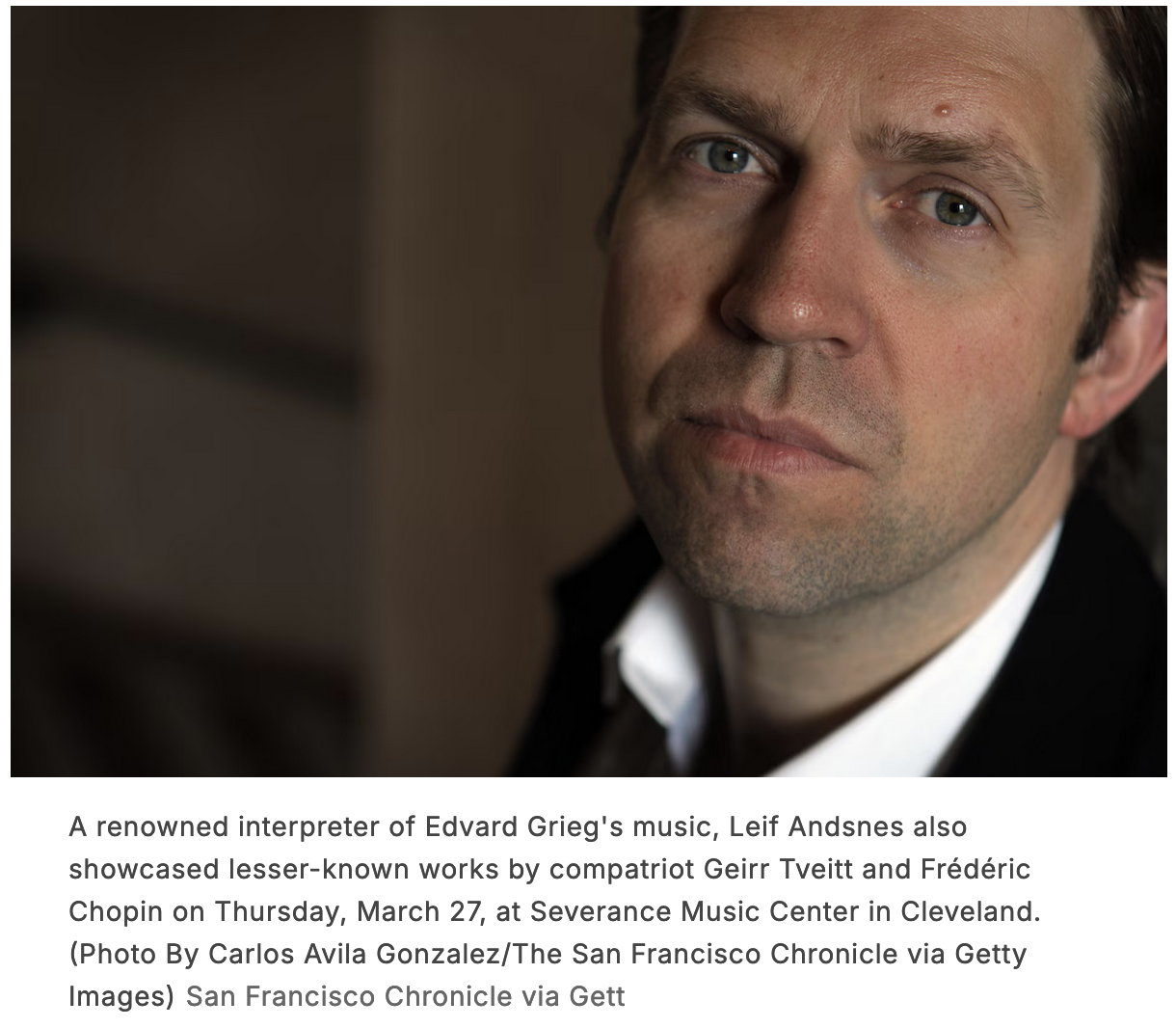by Stephanie Manning

CLEVELAND, Ohio — Touring musicians have been making some difficult decisions about whether to proceed with their U.S. engagements lately, and Leif Ove Andsnes is no exception.
“It’s with mixed emotions that I arrived in the U.S. yesterday,” the Norwegian pianist wrote in a statement on his social media. “Music cannot solve global problems, but I hope my program can at least inspire some of the emotions we so badly need right now: compassion, empathy, generosity, understanding, and an appreciation of diversity.”
Forging ahead with his recital tour, Andsnes took the stage at Severance Music Center on Thursday, March 27 as part of The Cleveland Orchestra’s Recital Series. The pianist gracefully represented his home country with music by Edvard Grieg and Geirr Tveitt, along with Frédéric Chopin’s 24 Preludes.
Andsnes is a renowned interpreter and champion of Grieg — at 20, he made his North American debut in Grieg’s famous Piano Concerto with The Cleveland Orchestra. Now 54, the pianist’s connection to his fellow countryman’s music is as strong as ever. The Piano Sonata in e minor, Op. 7, may be a less popular entry in Grieg’s catalog, but Andsnes played it with such care that the piece immediately felt both familiar and interesting.
Both the opening and closing movements contained some of the hallmarks of the pianist’s musicality that evening — energetic, but not heavy handed, with consistent clarity in the lines that emerged from either hand. Meanwhile, the second movement foreshadowed some of his most sensitive playing to come later, as he let the last, slow arpeggio linger in the big space.
Filling up the orchestra-sized Mandel Concert Hall alone is a daunting task, but Andsnes handled the challenge with ease. And Geirr Tveitt’s intriguing, dense Piano Sonata No. 29 would likely have been overwhelming in a smaller space. A fellow Norwegian born more than 60 years after Greig, Tveitt created distinctly 20th-century music with plenty of French influence thanks to his training in Paris. But he was also fascinated with the folk music of his homeland, which pervades his only surviving piano sonata.
Andsnes fearlessly dove into the thick, winding chords of the first movement. Eventually, the finale found him with each of his hands at the extreme ends of the keyboard, briefly joining together in the center before leaping apart like the matching poles of two magnets.
Most fascinating was the resonating effect that first emerged in the second movement, where Andsnes silently held down a collection of keys while striking notes higher up the keyboard, letting the freed strings delicately ring out in sympathy. In the final moments, this technique was used again to deliver four haunting calls into the void.
After intermission, he returned to tread more familiar ground with Chopin’s Preludes. The 24 brief pieces flip-flop between bubbly and somber, and the pianist treated their mercurial moods with affection. The vivacious No. 12 in g-sharp minor really came alive, while No. 15 in D-flat Major (“Raindrop”) was an oasis of calm and reflection.
The lovely, twinkling No. 23 in F Major paired well with Andsnes’ encore, Claude Debussy’s La cathédrale engloutie (“The Sunken Cathedral”) — a colorful kaleidoscope that creates a beautiful picture no matter which way you look.
Published on ClevelandClassical.com April 3, 2025.
Click here for a printable copy of this article



